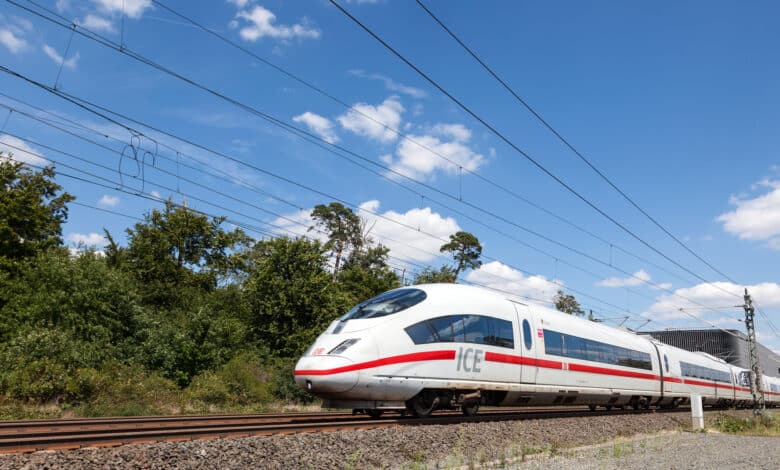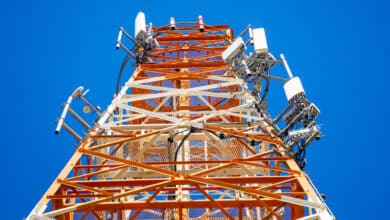
Slow network on the ICE? This will soon be a thing of the past. In recent months, Deutsche Bahn has equipped the first section of track with the appropriate technology for 5G. Today marks the maiden voyage with (hopefully) fast internet.
ICE with 5G starts its maiden voyage
Today is the day. The first ICE will whip along the tracks with a 5G network on board. The whole thing will take place on a test route in Mecklenburg-Western Pomerania, which is 10 km long in total. As part of the maiden voyage, the aim is to test how well reception of the mobile communications standard works, as reported by the SZ. This marks the culmination of the “Gigabit Innovation” project launched jointly with O2 Telefónica.
Both companies had to go to great lengths to cover the rather short distance. There are no fewer than 13 radio masts along the 10 km route, which were erected specifically for 5G coverage. Just imagine if Deutsche Bahn’s entire rail network had to be equipped with it. But it wasn’t just the track that was overhauled. Adjustments have also been made to the ICE itself.
Maximum speed not possible for the time being
For the test run, an ICE train is used that is no longer used for normal passenger services. This was equipped with the appropriate reception technology. This will probably not be necessary for later “series use”. Instead, the antennas on the train are intended to check how good the reception of the 5G network is. The speed of the train will also play a major role in this. Initially, the express train will travel at just 80 km/h.
A maximum speed of 140 km/h should only be possible afterwards. For an ICE, however, this is still like driving with the handbrake on. After all, the express train can travel at speeds of up to 300 km/h. However, radio transmission via the 3.6 GHz band does not seem to be able to withstand such speeds. For the time being, a decision will have to be made as to what is more important. Data speeds of up to 1,000 MB/s or a high cruising speed.
While the railroads are extremely euphoric, cautious skepticism is also appropriate. After all, it remains to be seen whether the test run will lead to a major expansion of the rail network. If the test proves that the comparatively easy-to-install radio masts deliver the required signal strength, a large-scale expansion could also be conceivable. Let’s see what findings the first results provide.



